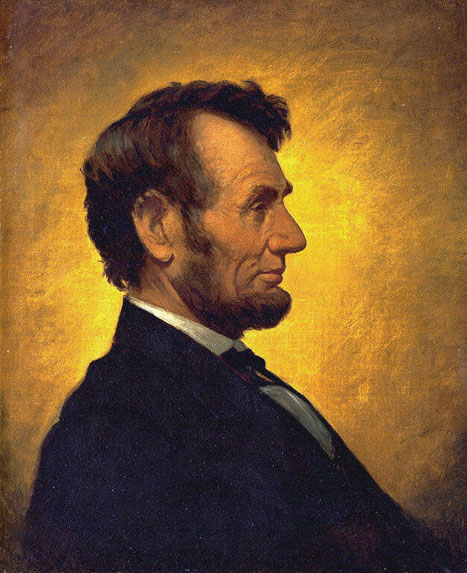Abraham Lincoln Elected President, Part III: Overcoming Adversaries and Preserving the Union

With a single mission in mind, Abraham Lincoln fought, during his entire presidency, not just against the South, but also against his critics—a cross-section of Americans that included everyone from journalists to generals. For Lincoln, the task was always to preserve the Union. In his first inaugural address, Lincoln said, “Continue to execute all the express provisions of our National Constitution, and the Union will endure forever, it being impossible to destroy it except by some action not provided for in the instrument itself.”
By the time Lincoln was sworn in as the sixteenth president on March 4, 1861, seven states—South Carolina, Mississippi, Florida, Alabama, Georgia, Louisiana, and Texas—had seceded from the Union. Also by the date of Lincoln’s inauguration, this new confederacy of former states had already elected its own president, Jefferson Davis of Mississippi, the former United States senator from Mississippi and secretary of war under President Franklin Pierce. Well in advance of his first day in office, Lincoln knew he would preside over a fractious form of the once-united land. He committed himself to the preservation of the Union, but his first task was to bring it back together by whatever means necessary.
One of Lincoln’s early detractors was Horace Greeley, founding editor of the New York Tribune. Greeley believed Lincoln was lethargic in his policies toward both slavery and the war, and used his newspaper as a vehicle to propagate his belief that the president was ineffective. Responding to Greeley’s invective, Lincoln wrote the following in a letter dated August 22, 1862:
As to the policy I “seem to be pursuing” as you say, I have not meant to leave any one in doubt. I would save the Union. I would save it the shortest way under the Constitution. The sooner the national authority can be restored; the nearer the Union will be “the Union as it was.” If there be those who would not save the Union, unless they could at the same time save slavery, I do not agree with them. If there be those who would not save the Union unless they could at the same time destroy slavery, I do not agree with them. My paramount object in this struggle is to save the Union, and is not either to save or to destroy slavery. If I could save the Union without freeing any slave I would do it, and if I could save it by freeing all the slaves I would do it; and if I could save it by freeing some and leaving others alone I would also do that.
Though this statement would seem to imply that Lincoln was not concerned about the plight of the slaves, it would be only a few months later that he would issue the Emancipation Proclamation.
Another of Lincoln’s detractors was George McClellan, Lincoln’s choice to head the Army of the Potomac. Routinely, Lincoln had problems with McClellan’s battle plans and eventually demoted him, only to face McClellan as an opponent in the 1864 presidential election. As with other challenges during the war, Lincoln faced off against McClellan and won the election. Lincoln would live for only one week after the conclusion of the war to see his Union reunited following Robert E. Lee’s surrender at Appomattox Court House in Virginia.
Many of Abraham Lincoln’s writings and speeches are well known and often quoted, but it is doubtful that anything Lincoln ever said could better sum up his efforts than the closing words of his second inaugural speech of March 4, 1865:
With malice toward none, with charity for all, with firmness in the right as God gives us to see the right, let us strive on to finish the work we are in, to bind up the nation’s wounds, to care for him who shall have borne the battle and for his widow and his orphan, to do all which may achieve and cherish a just and lasting peace among ourselves and with all nations.
- Warren Perry, Catalog of American Portraits, National Portrait Gallery